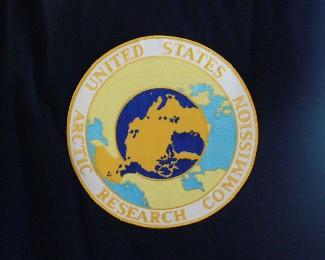22 June, 2000
22 June 2000
The Story In The Sediments
Coring operations continue today. This morning they are doing one more
60-foot core and this afternoon they will set up an 80-foot core. With all
this emphasis on coring, you may wonder what cores are for? With the help
of Dr. Garry Brass, Executive Director of the United States Arctic Research
Commission (USARC), I’ll discuss the answer to that question in today’s
journal. First, a little bit about Garry and the role of his Commission.
USARC was established by the Arctic Research Policy Act of 1984 and its
seven commissioners are appointed by the President. Composed of four
researchers, two businessmen, and one Alaska Native, the USARC establishes
policy for arctic research for the federal government. The same act that
established the USARC also established the Interagency Arctic Research
Policy Committee (IARPC), an organization of twelve federal agencies and
offices that have some role in arctic research. According to Garry, “We
make policy and they (IARPIC) carry it out”.
Dr. Brass’s training is in Geology, with a B.S. in Earth Science from UCSD
and a M.S. and PhD in Geology and Geophysics from Yale. After an early
stint at Florida State, he spent 17 years at University of Miami’s
Rosenstiel School of Marine and Atmospheric Sciences. The University loaned
him to NSF to serve as the Ocean Drilling Program Director from 1984-86, and
in 1994 Dr. Brass left Miami to work for USARC. He provided an excellent
description of “what we do with a core” to help me understand how sediment
samples are used. I would like to quote his summary, because it very
eloquently describes the value of collecting this type of data.
“What in fact do we get out of these cores studies? Cores are the tape
recorders of earth history. They are, for the most part, continuous records
of what is accumulated in the ocean basins as a result of surface conditions
on the planet. They record erosion rates, mountain building, volcanic
activity, the evolution of marine organisms and climate. Cores are the
Earth’s history book.”
However, this parcticular history book is written in several different
“languages”. In order to understand the story, each “language” must be
translated. This is accomplished by taking samples for three principal
kinds of analysis once the core has been split and recorded (see Todd’s
upcoming journal entry for this process).
One type of analysis measures the language found in the mineralogical and
sedimentological composition of the sediments. In other words, what type of
rock was ground up that formed these sediments and how much it was ground up
before it got to its location in the sea floor. Researchers can determine
grain size (how much it was ground up) with a microscope or through X-ray
diffraction. Determining what was ground up requires X-ray fluorescence
spectroscopy. This process involves subjecting the sediments to X-rays and
seeing what X-rays they then emit. Each mineral has its own emission
“fingerprint” so the scientist studying the sample can tell what is
contained in each of the samples he has taken from the core. This often
gives them clues of where the sediments came from in the first place.
The second type of sample involves “separation and identification of the
marine organisms preserved in the sediments”. Known as micro-fossils, the
skeletons of the prehistoric phytoplankton and zooplankton make up another
language of the story in the sediments. Different layers of these fossils
represent different timelines. The mapping of these layers is known as
biostratigraphy - “bio” meaning life, “strata” meaning layer, and “graphy”
basically meaning picture. Scientists have determined when various types of
the ancient plankton were present in the oceans and can now use them as a
measuring device for the age of the layers in the sediments collected by
coring.
The third language is actually contained in the shells of one of the types
of microfossils - foraminiferans. These one-celled animal-like protists
are a bit like amoebas with shells of calcium carbonate. When they die,
their shells become part of the sediments of the sea floor. The ratio of
the two oxygen isotopes 16O and 18O found in these shells is a function of
the temperature of the ocean when the shells were formed. The information
provided by this isotope language “is the basis for paleoclimate
reconstructions which have allowed us to learn about the timing and
intensity of past climate changes, especially the ice ages”. A similar
language is trapped in the ice sheets of Greenland and Antarctica in the
isotopes in the water that formed the ice, but their story only goes back
about 150,000 years. The story held in the foramineferan sediments goes
back as much as 100,000,000 years!
So, once these languages are translated, what kind of story is told about
our planet’s history? A very dynamic story for what the casual observer
might first take for a very static planet. Our earth is under continual
change. Tomorrow, you’ll meet Dr. Larry Lawver of the University of Texas
and learn how he uses a small part of the story in the sediments to fill in
gaps in the dramatic story of roaming continents he studies as a plate
tectonocist.

Dr. Garry Brass, Executive Director of U.S. Arctic Research Commission.

The Logo for the USARC. A Polar Reserach Presence.
Contact the TEA in the field at
.
If you cannot connect through your browser, copy the
TEA's e-mail address in the "To:" line of
your favorite e-mail package.
|
